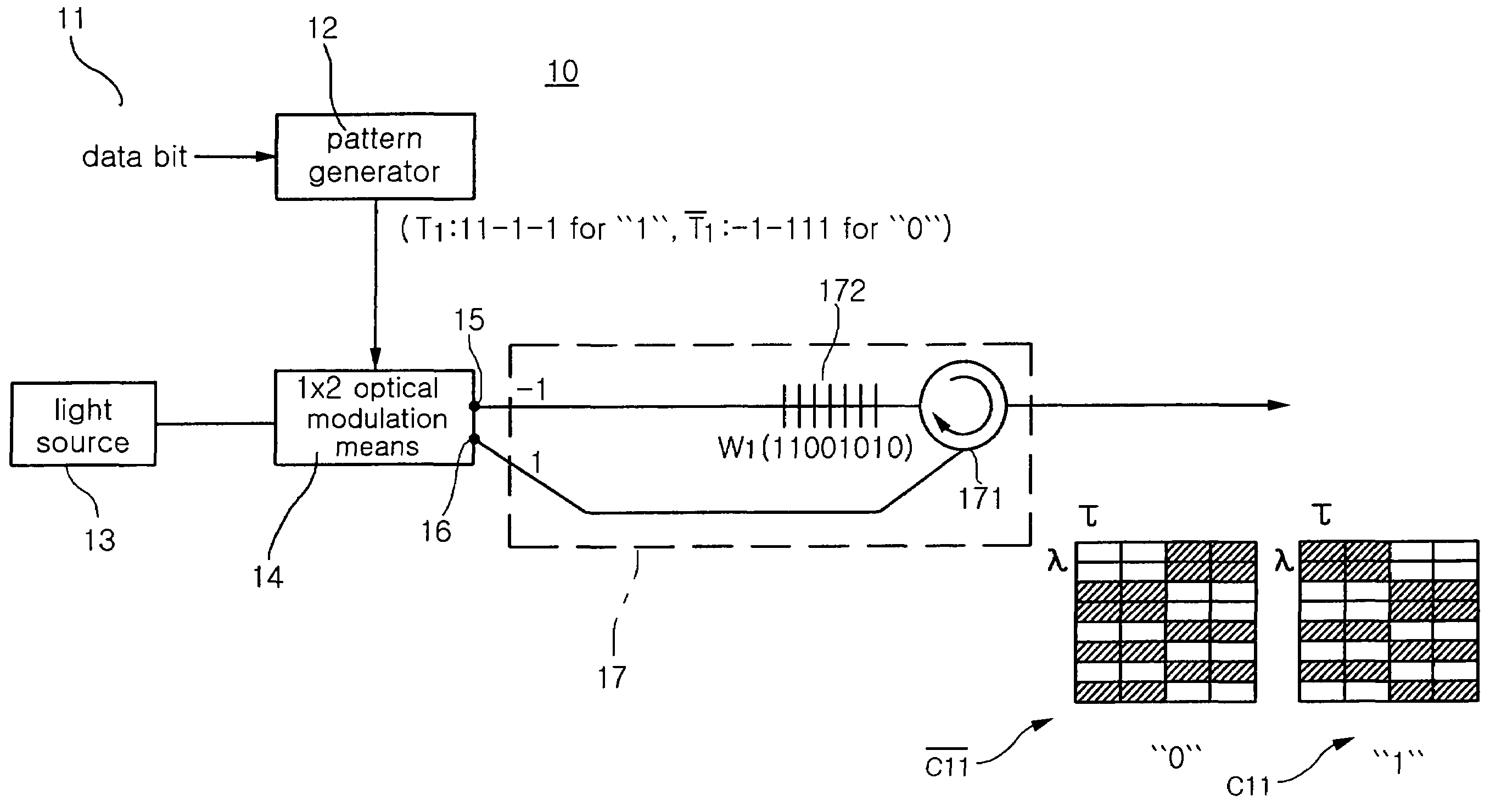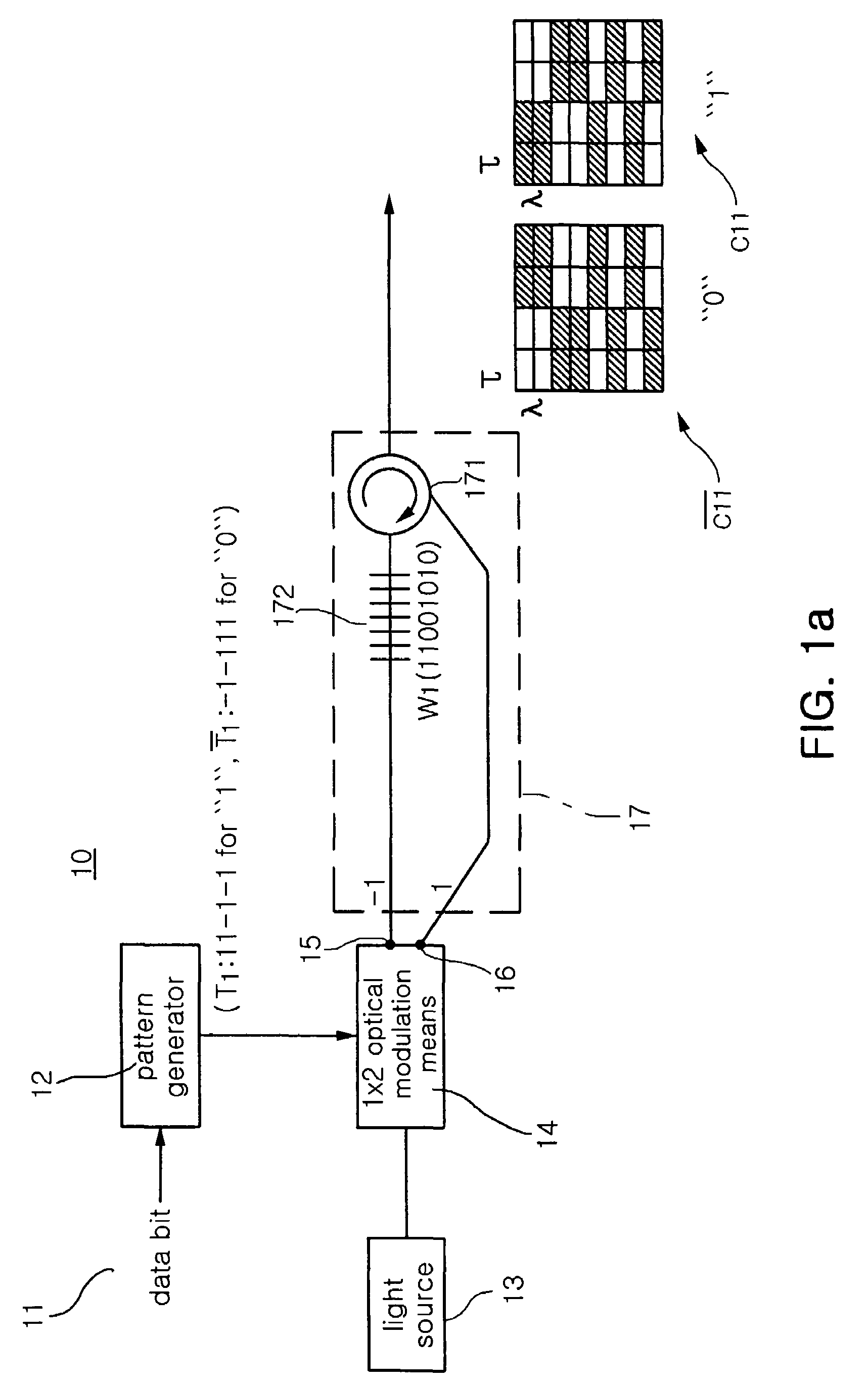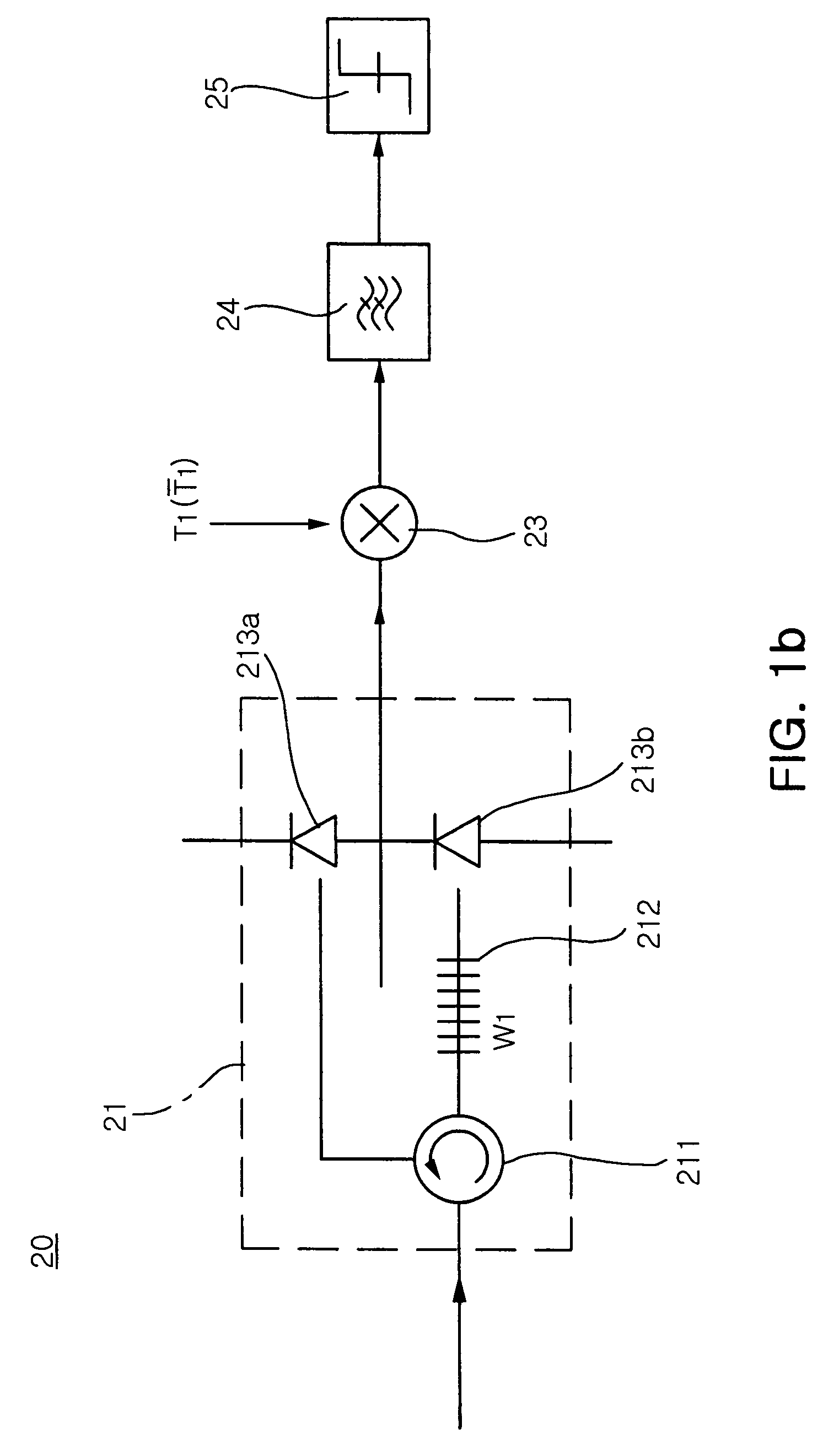Two-dimensional optical CDMA system, PN coded wavelength/time encoder and decoder therein, and method of encoding/decoding
a two-dimensional optical and cdma technology, applied in the field of optical code division multiple access (ocdma) system, can solve the problems of limited code number, limited created code number, and inability to secure the subscriber number, and achieve the effect of increasing the code number to be used
- Summary
- Abstract
- Description
- Claims
- Application Information
AI Technical Summary
Benefits of technology
Problems solved by technology
Method used
Image
Examples
Embodiment Construction
[0030]Now, preferred embodiments of the present invention will be described in detail with reference to the annexed drawings. In the drawings, the same or similar elements are denoted by the same reference numerals even though they are depicted in different drawings.
[0031]FIG. 1a and FIG. 1b are views illustrating a two dimensional OCDMA system according to the present invention. The two dimensional OCDMA system of the present invention includes a plurality of user terminals each of which includes an encoder and a decoder. The encoder encodes data bits and then transmits the encoded result thereto and the decoder decodes inputted light signal. FIG. 1a is a schematic block diagram illustrating an encoder included in an OCDMA system according to the present invention and FIG. 1b is a schematic block diagram illustrating a decoder included in an OCDMA system according to the present invention.
[0032]With reference to FIGS. 1a and 1b, the two-dimensional OCDMA system according to an embo...
PUM
 Login to View More
Login to View More Abstract
Description
Claims
Application Information
 Login to View More
Login to View More - R&D
- Intellectual Property
- Life Sciences
- Materials
- Tech Scout
- Unparalleled Data Quality
- Higher Quality Content
- 60% Fewer Hallucinations
Browse by: Latest US Patents, China's latest patents, Technical Efficacy Thesaurus, Application Domain, Technology Topic, Popular Technical Reports.
© 2025 PatSnap. All rights reserved.Legal|Privacy policy|Modern Slavery Act Transparency Statement|Sitemap|About US| Contact US: help@patsnap.com



